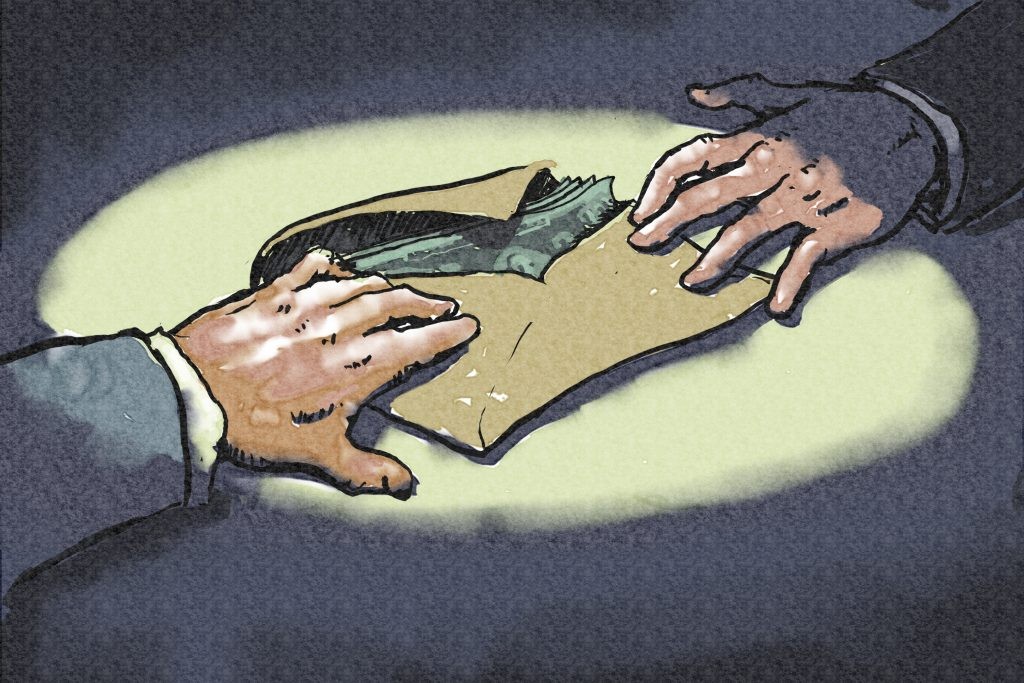
Analysing the phenomena of prevailing corruption and the way forward

Former prime minister Nawaz Sharif is behind the bars again. He has frequented the prison earlier also, once on charges of hijacking an aircraft without flying in it. This time around, he and his workaholic brother are incarcerated for corruption. Other politicians are also facing trials and tribulations on similar charges.
The prime minister has expressed his resolve not to step back from taking to task all the corrupt people. There cannot be two opinions about the impacts that the menace of corruption causes upon the normal functioning of a state. However, it may amount to over-simplification to limit the scope of corruption to a few persons and processes only.
It will be useful to expound on the various dimensions and labyrinths of corruption to obtain a holistic understanding.
The legitimacy of regime in power is of core significance in the discussion on corruption. A regime that fulfils all the constitutional pre-requisites and has ascended to power after corresponding to its prescriptions can be regarded as an ideal model. Not a single regime in Pakistan can qualify for this merit. The worst aspect is that instead of recognising this shortcoming in an impartial and honest manner, the regimes in power continue to cover up for illegitimacies by creating confounded facades of their existence. Naked military coup d’états were proclaimed as rescue attempts for democracy whereas the champions of democracy in the past unconstitutionally dismissed elected provincial governments without any tinge of validity in their actions.
Nothing can be more disastrous for a society than a time when pack of lies from the ruling elite becomes the yardstick of political morals, further sidelining the few men of character. Speaking and acknowledging the truth is equivalent to eradicating part of corruption from that domain.
The menace of corruption multiplies when stipulated laws, statutes, rules and regulations are not followed. An even worse scenario is the selective enforcement of the legal provisions. Our society provides countless examples where laws are followed differently for plebeians and patricians. A poor hari can be sent to the gallows even on mild accusation of a crime by a noble. An honourable sardar or wadera can walk scot free even after proven records of the most heinous of crimes. The reasons for this state of affairs are several. The legal provisions are kept as a tool for hegemony and enhancement of the clout of already powerful -- not for the dispensation of impartial justice as the social norms would demand! It must be understood that the rule of law invariably requires an attitudinal change in the social psyche of the elite.
A related issue is the popular perception of corruption. Few decades ago, the common people considered corruption as an unpardonable vice which had to be instantly eradicated. They would distance themselves from such souls who had dubious incomes or lived beyond their normal financial status. It appears that the society at large is greatly confused viz-a-viz its position on corruption and its stretches. The blatant infiltration of corrupt practices (and people) has distorted the line of distinction between clean and corrupt.
Bribery is defined as the standard form of corruption. Over a period of time, it has acquired very sophisticated formats. According to a recent World Bank report, bribery has become more than one trillion dollar industry per annum at the global level. In yesteryears, one would find a nervous looking visitor handing over a note book or diary containing a few currency notes to an official. The whole operation had to be covert. Times have changed. Bribery, in many domains, has become a standardised exercise. Rates, modes of transaction, delivery, receipt and accumulation have become well known phenomena. The finesse in this crime is such that one cannot catch the culprit.
Existence of a high volume informal economy, culture of cash transactions, absence of documentation practices in assets and wealth are few of the dominant causes. Despite the fact that digital and cyber technology is increasingly used in financial matters, perpetrators of corruption dodge the system with effortless ease. Whether it is a matter of registration of a first information report or the acquisition of trading license for a trade, nothing can move without greasing the palms of the concerned. In some cases, the bribery deals are contracted outside the country.
Extortion has become an organised business. Personnel of law enforcing agencies, government officials, office-bearers of certain political parties, religious syndicates, underworld groups and petty criminals are the cadres associated with this trade. From street hawkers to airline owners, all are subjected to this vice according to respective scale and profile. Some outfits have become notorious for this form of corruption. The ethno-political party that controls the Karachi Metropolitan Corporation (KMC) is an example. During their heydays, its sympathisers and workers used to collect regular extortion sums from shopkeepers, businessmen, industrialists, neighbourhood residents, hawkers and transporters. Feudals and sardars use clan linkages to collect extortion toll. Similarly, pirs and sajjada nashins of mystic descents collect compulsory donations from disciples.
Public funds are a sacred trust. They must be spent on the public well-being in accordance with stipulated guidelines. One finds these funds routinely embezzled and misappropriated through very crafty techniques. Present process of contracting and procurement offers the best example to observe this form of corruption.
Eradication of corruption has become a global issue. However its reduction is directly connected to our social values and lifestyle preferences. For removing corruption, attitudinal change has to be brought among the people. In contrast to the prevailing high consumption lifestyles and ostentatious living, simple and frugal practices need to be adopted.